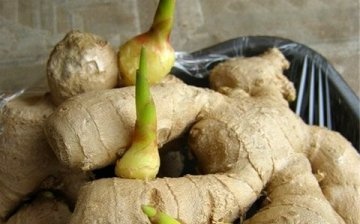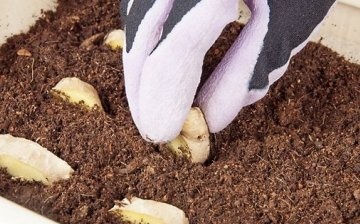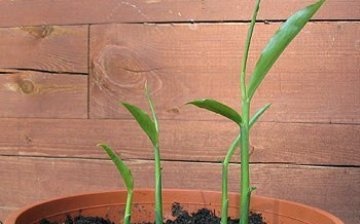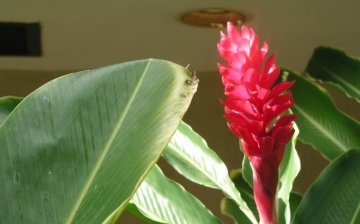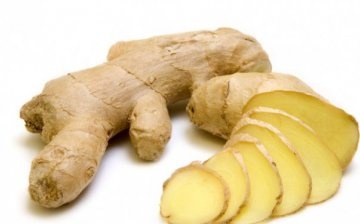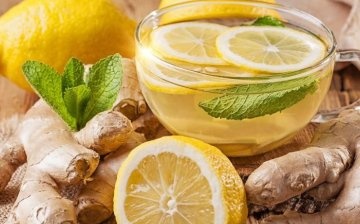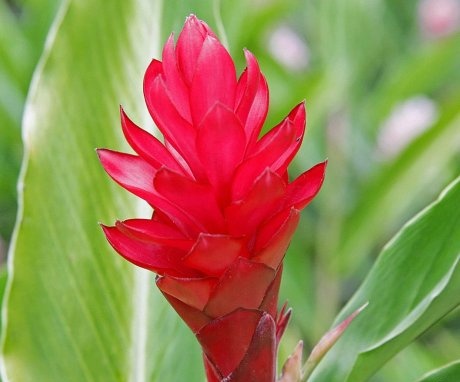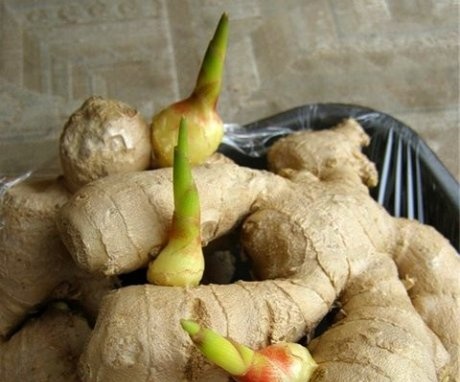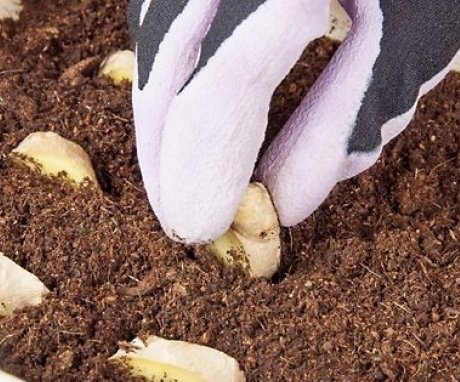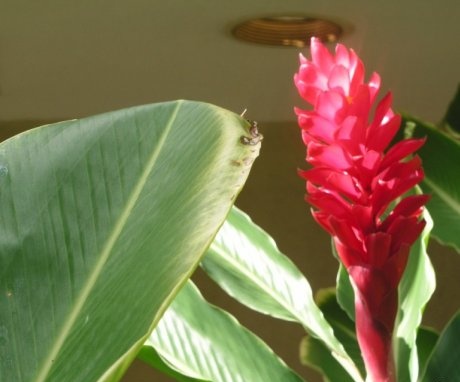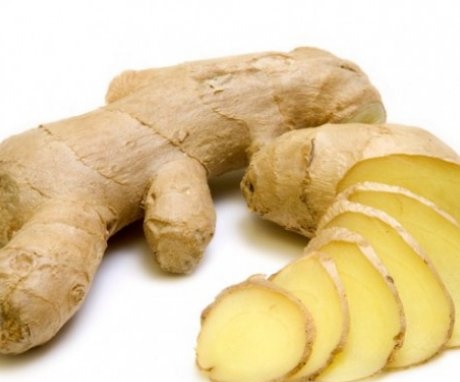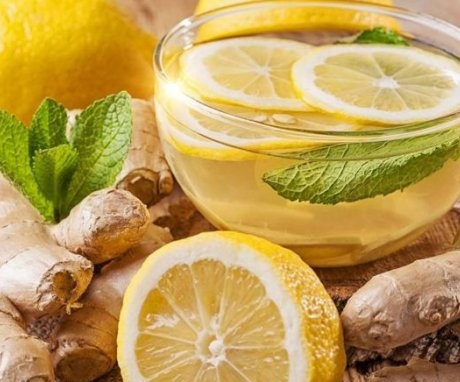How to grow ginger from a root at home on a windowsill
In ancient times, people knew a lot about the properties of herbs. The people were engaged in collecting and growing various crops, herbs. So in Russia, already in the 15th century, they knew about ginger, which is not only a decorative flower, but also a medicinal plant and a spice.
Content:
- Ginger - external data
- Planting material
- Landing: timing and rules
- Care Tips
- Diseases and pests
- Storing ginger root
- Useful properties and uses of ginger
Ginger - external data
Ginger is a slow-growing perennial plant. It can be grown both for decoration and for consumption as a spice. Earlier "horned" was used in baked goods (gingerbread, cookies), in tea, to give the dish an exotic taste. The flower is native to Western India, also native to Southeast Asia. From the family of turmeric, lily, cardamom and tulips.
Outwardly, the plant does not stand out much - a grass similar to sedge. Grows upward, can reach 100 cm. The leaves are large, leathery, elongated. Erect inflorescences, like spikelets of wheat, come straight from the root, can shoot up to a height of 40 cm. Green shoots, when touched, emits a citrus aroma.
The flowers of the shrub stand out in different colors - yellow, purple, white or pink with lilac edging.
Flowering occurs in mid-April and lasts until the end of August. The buds are thrown out only in the third year of life. Has creeping rhizomes located on the surface. In a wide pot they grow up to 1 meter wide. Loves a lot of sun. Feels great on southeastern or southwestern window sills.
There are two types of storage processing:
- White - the top skin is removed. It undergoes a special chemical treatment and loses some of its nutrients.
- Black - not cleaned, but poured over with boiling water. A pungent taste and a pungent odor remain, all useful qualities are preserved inside the root crop.
Thus, the plant stands out among other subspecies with a memorable appearance. It is grown not only for decorative purposes, but mostly for food.
Planting material
Growing ginger is not difficult, but few people dare to do it. Before planting, you should decide what the spice will be planted for:
- For decorative purposes, it is recommended to take a narrow and deep pot so that the root does not creep, and the plant stimulates the growth of aerial shoots.
- For growing for harvesting from green shoots and rhizomes, it is more advisable to take a medium-sized, wide and low flowerpot. The roots are localized mainly on the surface. Only underdeveloped adventitious roots go deep into the container.
For planting a tuber, it is recommended to prepare a substrate (1: 1: 1) from garden soil, leaf humus, sand. This composition can be mixed with soluble granules of complex fertilizers for rhizomes.
Top dressing will create the necessary conditions for the formation of strong and developed roots.
If it is not possible to make your own soil, it is worth purchasing citrus soil in a specialized store.It is soft, loose, breathable and contains essential ingredients for healthy growth.
At the bottom of the pot, drainage (expanded clay or river gravel) must be laid out - at least 2-3 cm thick. The earth is poured next. It should not be tamped down. A tuber is laid out on top and slightly pressed into the soil by 1-2 cm, no more. The phalanges should be placed horizontally with the kidneys on top. Favorable temperature for germination of the first buds is +25. When lowered to +18, the kidneys fall asleep. Thus, each type of cultivation requires its own pot. There are different ways to stimulate a shrub for color or for root growth.
Landing: timing and rules
To plant and grow a healthy plant, the choice of planting material should be taken responsibly. "Phalanges" are recommended to be taken fresh, firm, with smooth intact skin, without signs of mold and dry areas, silky to the touch, without excessive fiber, delicate golden tone. Externally, the tuber should be glossy, with a large number of buds, like "eyes" in a potato.
If there is little planting material, then the "phalanges" should be cut, but each of the segments should have one active bud. Each plot must be soaked in a weak solution of potassium permanganate - a measure of protection against fungi or mold, as well as disinfection of any microscopic damage. Slices on both sides are sprinkled with activated carbon or wood ash... To activate the growth of dormant buds, it should be placed in a dark cool place for 2-3 weeks or soaked in water for several hours.
Planting is carried out in late February - early March. There are three basic rules to follow:
- Do not overdry the ground.
- Spray constantly.
- Avoid sunburn.
Thus, correct planting guarantees a healthy plant and a quality harvest.
Care Tips
A warm place filled with sunlight is suitable for active growth. The main thing is not to place luminaries, drafts and cold winds on direct midday rays.
Recommendations for proper watering:
- Before the first buds appear, water should be moderately, not oversaturated the soil with moisture. Sometimes there are stagnations, they are a destructive environment.
- When the room temperature drops, watering is reduced.
- In the warm season, irrigate as the soil dries up, watch out for drying out.
- In the heat, it is better to expose the flowerpot to fresh air, but shade it from midday irradiation.
- After each watering, so that the soil is not clogged, air flows to the tuber - the soil should be loosened. It is better to drain the excess water from the pan.
- In autumn, watering is limited, provoking root growth. The harvest mark is leaf fall.
- It tolerates greenhouse conditions well. Likes abundant spraying - several times a day. Watering from a spray bottle is carried out in the morning or afternoon to avoid burns on the leaves.
It is recommended to feed the spice every 2 weeks during the entire growth. Supplements must be alternated - organic with potash fertilizers. Also, the introduction of liquid mullein or chicken droppingsdiluted with water (1:10).
Thus, proper planting and maintenance will lead to a good harvest. It is imperative to introduce top dressing.
Diseases and pests
In most cases, ginger is resistant to various kinds of diseases and pests. Winter is a dangerous time. Air dried out by batteries provokes drying out of the soil and the appearance of a spider mite.
When a harmful insect appears, the leaves are covered with small dots of a yellow tint, which quickly increase in size. The bush becomes pale, lifeless. Failure to take control measures will provoke a disastrous outcome.
Pest control methods:
- To eradicate the problem, increase watering and spraying. Place a pot in a filled pan to saturate the earth with moisture.Wash the greens under running water, wrap the soil with plastic at this moment. After water procedures, without letting dry, it is recommended to wrap the leaves in a bag and leave it for a week. In high humidity, insects will die, which cannot be said about their eggs.
- It is possible to completely eradicate both the instigator of the disease and its eggs with the help of chemical treatment. This is the fastest and most effective way to get rid of a tick. Spraying is carried out once a week.
Timely detected foreign insects can lead to the death of the entire bush. It is recommended to urgently take measures to destroy harmful inhabitants.
Storing ginger root
In early September, the leaves on the stems begin to turn yellow, dry up and fall off. If the flower was grown for decorative purposes, then cutting the flowers is not worth it. Do not dig up the tuber. For the winter, during the dormant period, the flowerpot with the bush is placed in cool conditions, thereby providing rest. Watering is limited - once a month, not fed. After a dormant period, the grass will come to life again. At the beginning of spring, the intake of moisture increases.
Top dressing is applied with a triple fertilizer containing potassium, magnesium and phosphate (Nitroammofosk). Otherwise, when the root is grown for food use, it is dug up. "Phalanges" are cleaned from the remnants of the earth, washed.
Dry in a sunny place within 3 days.
From horned root crops fried in the sun, several segments are laid for further reproduction. They should be placed in a cool place at a temperature of +50 C, for example, a cellar, the lower compartment for storing vegetables in the refrigerator. The main thing is to wrap it in paper.
The resulting product can be chopped or cut into chips. The prepared material is used both dried (placed in a dark dry container - an iron tea can) and frozen - poured into a dry plastic container. In this state, ginger is stored for up to 6 months.
Useful properties and uses of ginger
"Horned root" is freely available in any supermarket, as well as in specialized stores. It is distributed both dried, chopped and fresh. In the latter version, it is much more useful to acquire - all vitamins and microelements are preserved.
- Ginger can be used to make tea, prevent illness, or help cure colds.
- The rhizome contains a large amount of vitamin B3. Eating the crushed pieces increases the local immunity of a person.
- Improves mood, relieves depression.
- It is used to increase tone and potency for men.
- It has a beneficial effect on the hair - it charges with shine and beauty.
- The face becomes fresh and youthful - wrinkles are smoothed out, the color of the skin improves.
- Spice improves metabolism in the human body.
- Relieves fatigue, relieves migraines, generates the production of physical strength, increases efficiency.
- Overweight people, taking tea in the morning, lose calories.
Has limitations for use. Not for people with stomach ulcers, diseases associated with the intestines and colitis. Not recommended for pregnant and breastfeeding women.
Thus, ginger is a medicinal plant that can prevent many diseases and improve overall well-being.
More information can be found in the video:





